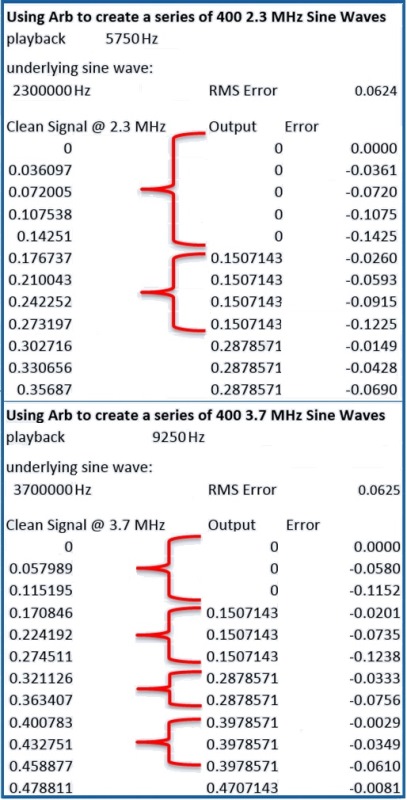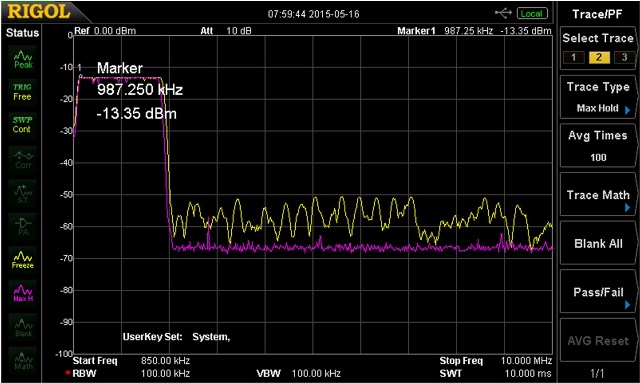By Chris Armstrong
Director of Product Marketing & SW Applications
Rigol Technologies
www.rigolna.com
For many years, function and arbitrary waveform generators — often referred to as ARB generators by test engineers —have traditionally been built on one common technology: direct digital synthesis (DDS). DDS has enabled quality performance at a reasonable price for generations of function generators. However, new technologies are enabling instruments to take advantage of DDS approaches while improving signal fidelity, making those instruments useful for more applications than ever before.
ARB technologies like SiFi, developed by Rigol for its DG1000Z series, and TrueForm, from Keysight Technologies, are specifically designed to improve signal fidelity in waveform generators. Instruments based on these technologies combine the true point-to-point waveform generation of arbitrary signals with redesigned output hardware to create arbitrary waveforms with a flexibility and accuracy not previously seen. Further, the availability of deep memory enables emulation of precise arbitrary signals over longer periods without losing fidelity.
Understanding DDS
To create waveforms, the DDS method uses phase of a reference clock to determine the correct output over time; that is, it tracks the phase and outputs at each output sample time one of a group of predetermined sample points that is the closest corresponding point to the phase.
For example, let’s say we wanted to create an waveform that consists of 400 cycles of a sine wave and we want to play back this waveform at a frequency of 6.25 kHz, thus creating a sine wave signal with a fundamental frequency of 2.5 MHz.
To describe this signal, we have 8,192 sample points that representing the output level at a given time. The DDS generator assigns a phase value to each point in the wave: the first point is 0° and each point after is incremented by 360°/8,192, or approximately 0.044° degrees. This allows for all 8,149 points to be played in a period and the first point to be up again when it returns to 0°.
The DDS instrument, however, has a fixed 200 Mpoint/s, or Msample/s, update rate; that is, it must output a point/sample once every 5 ns. Driven by the clock source (often a PLL), the instrument essentially measures its phase from the start every 5 ns and chooses the closest phase value to select from the ARB table. In this example, each 5 ns represents 360° / (200 Msample/s ÷ 6.25 kHz) = 0.01125°. Therefore, the arbitrary waveform looks like figure 1 in the UltraStation software.

Fig. 1: A DDS ARB generator created the 400 cycles of sine wave, shown using Rigol's UltraStation Software.
However, distortion becomes a significant problem if we try to play back the waveform at a different fundamental frequency, as is often done when, say, checking filter performance. Fig. 2 shows the actual output values that are selected when playing back the wave at fundamental frequencies of 2.3 and 3.7 MHz.
Even though we are putting out samples more often than is required, we create distortion. Namely, in the case of the 3.7-MHz arb, some of the points (which are meant to be evenly spaced in time) are repeated for 10 ns and some for 15 ns. The lack of smooth, continuous changes created by the file’s quantization of the sine wave causes this distortion. The distortion is increased significantly when the playback period is adjusted slightly, because the DDS algorithm is forced to make tougher decisions about which point to output, since the ideal output is now further from the available points which were chosen for the initial playback period.

Fig. 2: This arbitrary-wave data table shows the DDS generator output every 5 ns for signal playback at 2.3-MHz (left) and 3.7-MHz (right).
This is critical because choosing samples to generate the correct, high fidelity arbitrary signal is a time-consuming and difficult task. Using DDS, engineers who want high fidelity signals must go back and resample, recreate, and reload an arbitrary waveform whenever they want to tweak the playback period. DDS forces engineers to choose between convenient and efficient signal generation or high fidelity and accuracy during playback.
Lower sample rate, higher integrity
ARB technologies like SiFi overcome this basic effect on signal integrity with a new architectural approach. Essentially, it lets the reference clock/sample rate be set to the best value for accurate waveform generation. Let's take the same signal and example, and see how it is generated in SiFi mode.
We load the same 8,192- point arbitrary wave and set the output sample rate to 51.2 MSa/s (8192 points * 6.125 kHz). Now, we compare the SiFi output with the DDS mode output using a spectrum analyzer; using Max Hold on each trace, we change the playback frequencies between 1 and 2.5 MHz, changing the fundamental frequency for DDS and the output sample rate for SiFi (fig. 3). As we adjust the playback parameters in real time, DDS mode creates signal distortion at various frequencies across the 2-10 MHz band shown in yellow. Using the same exact arbitrary waveform a simple switch to SiFi mode creates much more even waveforms with significantly higher signal fidelity shown in purple.

Fig. 3: A spectral comparison of 1 to 2.5 MHz sinusoidal arbitrary waves generated using DDS (yellow) and SiFi (purple) technology.
The choice of an ARB generator all depends on the importance of signal fidelity to the application at hand. This simple example of the difference between the two architectures serves to point out the tradeoffs being made with a traditional signal generator, tradeoffs even advanced users may be unaware of. Most users assume that a 30- or 60-MHz arbitrary generator is capable of creating a nearly perfect 1-MHz sine wave.
While many engineers look at output sample rate as a key specification, it doesn’t tell the whole story. In the preceding example, the DDS wave was being output at 200 MSa/s while the SiFi wave was being output at about 50 MSa/s. Yet the SiFi wave produced a much cleaner signal.
The more complex the arbitrary waveform, the more difficult it becomes to understand the impact of the sampling technology. Artifacts from this resampling can have profound impact on the frequency content of a true arbitrary wave and there is no way to easily separate the real wave from the sampling artifacts. This also means that buying a DDS waveform generator with a higher output sample rate invariably alters the frequency components of the signal, even when playing the same arbitrary file. With technologies like SiFi, this is not the case.
Advertisement
Learn more about RIGOL Technologies





